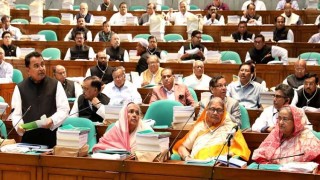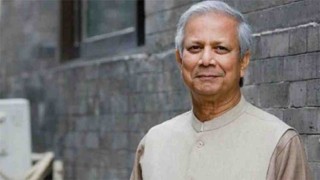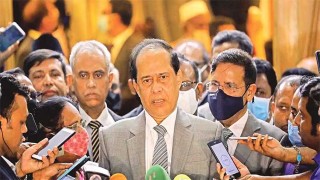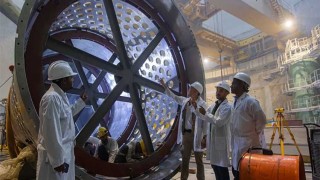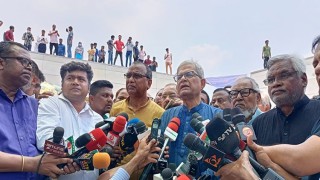SANEM’s reaction to proposed budget for FY2022-23
09 June 2022, 08:59 pm | Updated: 24 November 2024, 11:38 am
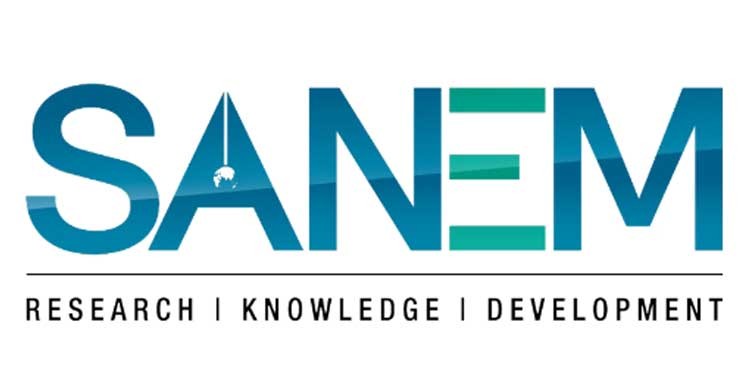
The proposed budget for FY 2022-23 acknowledges the rising inflationary pressure, however, the expectation of limiting average inflation to 5.6 percent in next year is quite ambitious, given the current context and shifting global economic factors.
Sales through TCB to mitigate the effect of inflation on low-income people, as mentioned in the budget, is commendable. The budget also promises to continue taking actions against hoarders, but does not offer any detailed action plan, said a press release on Thursday (June 9).
Provisions for decreasing tariff on essential items, exploring alternative import sources or similar supply side interventions for tackling inflation, have not been clarified in the budget. In this regard, the implementation processes of policies aimed to relieve the public from inflationary pressure, has not been properly clarified.
The main strategy to contain inflation, outlined in the budget as increasing the supply along with reducing the growth in demand, stands in contradiction with the medium-term policy strategy which aims to focus on consumption and investment to increase the domestic demand and exports to increase the external demand.
More importantly, it would not be prudent to focus policy action on demand side whereas the inflation is being pushed by supply-side costs—this may have depressing implication for the economy. Balance between macroeconomic targets and development goals through policy coordination has not been reflected accordingly.
If the inflation rate exceeds 6 percent then the real interest rate would become negative. However, the budget did not address this fact. Bangladesh is still maintaining the 6% and 9% rates which is not desirable.
The budget prioritizes six challenges which are timely and appropriate. However, it is unfortunate that challenges of poverty and job growth have not been included. Contrasting the visible economic recovery from COVID-19 fallout, social recovery in terms of poverty alleviation and job growth has been rather slow. In this regard, three issues pertinent to social safety net should have been addressed: poor allocation, target mismatch in terms of inclusion and exclusion errors, and coordination failure among implementing agencies.
With regard to human development, trade and investment, the budget follows conventions of its predecessors and has not addressed the associated challenges in the current context. In order to materialize strong domestic and external demand, the budget emphasizes swift implementation of establishment of economic zones and mobilization of foreign investments. However, definite policy directions have not been outlined in this regard.
Although the budget regards that Bangladesh has successfully overcome the adverse economic impact of the COVID-19, it is rather an overstatement considering the impact of recent shocks, such as high inflationary pressure, escalated current account deficit, negative growth in remittances, stress on the US dollar exchange rate, strain on the foreign exchange reserves and long-standing challenge of job creation.
It is commendable that stimulus support for SMEs will be continued, nevertheless, existing challenges faced by SMEs in accessing allocated funds have not been addressed. Also, the modality and process of stimulus support for SMEs remains unclear.
Though the allocation for health and education has been increased in nominal terms, with respect to GDP share, allocation has declined for education and remained static for health. However, previous records have shown that allocation for health remained underutilized.
On the other hand, the issue of education loss due to the COVID-19 pandemic has not been addressed either. The Government’s proposal for a universal pension scheme is praiseworthy. However, the budget has failed to mention any concrete strategy in this regard and therefore it remains ambiguous how and when the scheme would be implemented.
The expenditure cut in the revised budget for FY 21-22 once again illustrates capacity utilization failure of responsible institutions. Capacity utilization failure has been a recurrent theme throughout the years, but as usual has not been addressed in the newly proposed budget. On the other hand, revenue target for the next financial year has been set at Tk. 4,33,000 crore which again is rather unrealistic considering NBR’s consistent failure to achieve its own targets in the previous years.
One of the positive sides of the budget is that the tax benefit for RMG has been extended to other exporting sectors. The budget also acknowledged that tax exemption for project implementation or maintenance work should not be in consideration.
However, new tax exemptions are proposed, which is contradictory to that acknowledgement. Corporate tax rates are reduced for companies to make the economy business-friendly. We can notice a variety of tax exemptions and we do not know what will be the result of it. Reforms of tax structures should have been proposed.
The lack of proper feasibility studies and the cost and time overruns in many megaprojects have been a major area of concern which again have not been addressed in the budget. It is high time that a proper evaluation of progress in megaprojects and transport projects was undertaken.
While e-governance and digitization of certain government services have been included in the budget, major institutional issues have been rather side-lined. For instance, much required reforms in banking sector have not been proposed. There also has been no major shift in policy structure to address the issue of rising default loans.
The proposed budget provides scope of amnesty for money launderers with proposal of 15 percent tax on immovable property not repatriated to Bangladesh, 10% on movable property not repatriated to Bangladesh and 7 percent on cash and cash equivalents repatriated to the country. It is not clear how this policy measure will benefit the economy. This will rather encourage illicit money transfer and capital flight.














